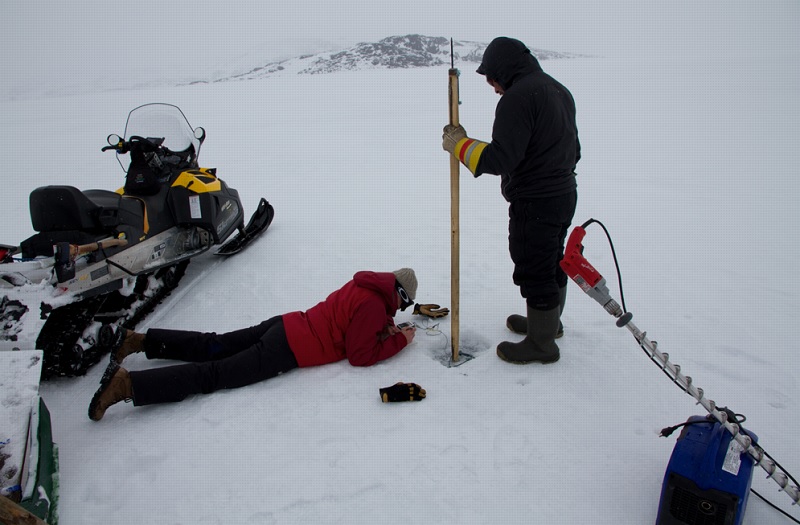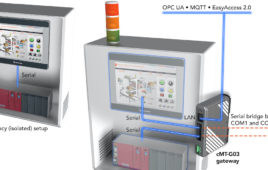
Image credit: Nain Research Center / SmartICE 2016
Two Arctic communities have set up simple sensors to record complex changes in the sea ice. The SmartICE system has been placed in Nain, Labrador and Pond Inlet, Nunavut in Canada as an effort by Inuit leaders to understand the thinning of the ice caused by climate change.
The project includes information from the Nain Research Center, Memorial University, Trend University, the sea ice charting service C-Core, the Canadian Ice Service, and others. The low-cost sensors will be installed in the sea ice before the region completely freezes. They are then naturally embedded in the ice as it closes up, meaning they can be placed in areas which aren’t always accessible by humans during the coldest seasons. The data can be transmitted once a day to a satellite, which then sends it to a central server.
The sensors are needed because melting ice makes a big impact on Inuit communities. According to Motherboard, one in twelve people living in the region around Nain fell through the ice in the 2009/10 winter season, and two-thirds said they feel frightened to travel over the ice.
Sea ice needs to be at least 15 centimeters (5.9 inches inches) thick in order to be safely passable by people on snowmobiles.
Along with measuring the thickness of the ice, the SmartICE sensors will also be able to repeat Synthetic Aperture Radar (SAR) satellite imagery. These images will help people assess sea-ice surface conditions, including water content, roughness, and concentration. They are gathered by scanning the ice with microwave remote sensing technology and tracking the backscatter reflected from the surface. This will also help establish techniques to tell different types of ice from satellite imagery and create a database about how to ‘read’ the maps.
The combination of both individual sensor data and the satellite overview could lead to “hazardous ice maps …for self-identified users,” the research center said. These could give people a heads-up on whether the ice is passable, including details such as whether the ice thickness is appropriate for snowmobiles or ships, or professional or amateur travelers.
The Nain Research Center notes that while the sensors are designed to be affordable, they aren’t expendable. They will be able to be tracked so that they can be recovered after the sea ice breaks up enough to allow for human passage. These treacherous seasonal changes are exactly what the sensors are intended to help predict, adding to the traditional knowledge of the people in the region and helping them adapt to change.
Filed Under: M2M (machine to machine)




